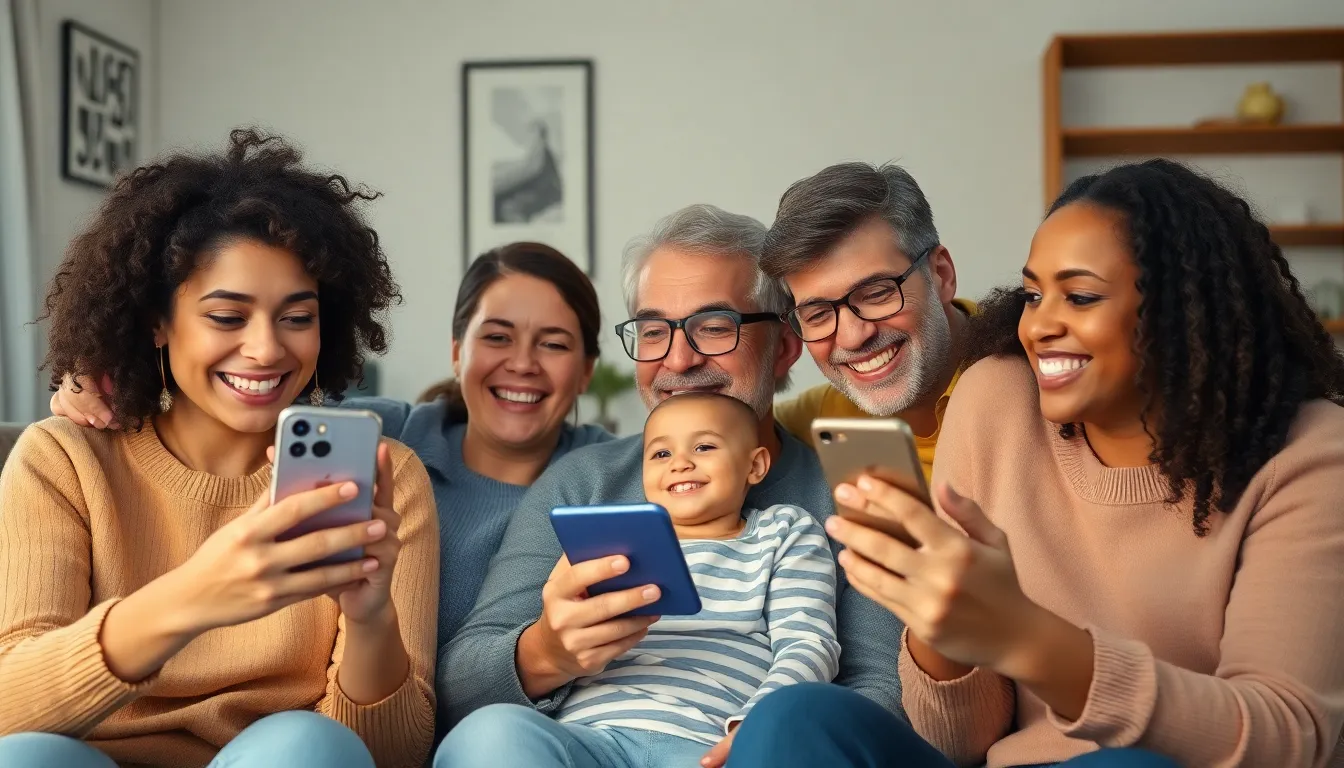In a world where communication has become as easy as sending a text, the quest for seamless video calls continues. Picture this: you’re on an Android and your friend’s flaunting their shiny new iPhone. Can you FaceTime? It’s a question that’s puzzled many and led to some hilarious misunderstandings.
While Apple’s FaceTime is a beloved feature for iPhone users, it doesn’t extend its arms to Android devices. But don’t despair! There are plenty of alternatives that can bridge the gap between these two tech worlds. So, grab your favorite snack and get ready to explore how you can connect with your iPhone-wielding pals without missing a beat.
Table of Contents
ToggleOverview of FaceTime
FaceTime is Apple’s proprietary video calling app designed exclusively for iOS and macOS devices. The app allows users to initiate high-quality video and audio calls with other Apple device owners. It offers features like group video calls, which accommodate up to 32 participants, enhancing the user experience.
Users appreciate FaceTime for its integration with contacts and seamless interface. The app primarily leverages Wi-Fi or cellular data, ensuring clear communication. FaceTime supports both portrait and landscape orientations, making it user-friendly across different scenarios.
Notably, Apple restricts FaceTime usage to its ecosystem. This limitation means Android users cannot directly connect through FaceTime, leading to misunderstandings among potential users. Consequently, individuals with Android devices must explore alternate video calling options to communicate with iPhone users.
Popular alternatives include Zoom, Google Meet, and Microsoft Teams. These platforms offer cross-device compatibility and various features. Users can initiate calls without compatibility concerns, allowing for continued connectivity regardless of device preferences.
FaceTime serves as an effective solution for Apple users while presenting challenges for those on non-Apple platforms. Understanding these dynamics helps users make informed decisions about their communication methods.
Compatibility Between Android and iPhone

FaceTime only operates within Apple’s ecosystem, limiting its use for Android users. This restriction creates challenges for cross-platform communication.
What is FaceTime?
FaceTime is Apple’s video calling application designed for iOS and macOS users. It allows users to make video and audio calls effortlessly. A group feature supports up to 32 participants, making it suitable for family gatherings or work meetings. Integration with contacts enhances user experience, allowing quick access to friends and family. Those who use it often praise the high-quality audio and video it offers.
FaceTime Requirements
To use FaceTime, devices must meet specific requirements. Users need an iPhone, iPad, or Mac running iOS 12.1 or later. A strong Wi-Fi or cellular connection is essential for optimal performance. Apple ID registration is mandatory for accessing the app. Group calls require all participants to be on Apple devices, limiting users who wish to connect with Android users.
Alternatives to FaceTime
Several options exist for video calling across different platforms. Users can connect without being limited to FaceTime.
Popular Video Calling Apps
Zoom stands out as a top choice for both professional and casual video calls. It supports group calls with many participants and offers features like screen sharing. Google Meet provides another robust solution, allowing users to connect through a simple web interface. This app works well for both personal and business use. Microsoft Teams also caters to a wide audience, integrating seamlessly with Office applications for collaborative video conferencing.
Cross-Platform Video Calling Options
Skype is a classic option that supports calls between Android and iPhone users effortlessly. Users enjoy its functionality for text, audio, and video chats. WhatsApp offers video calling features that work across platforms, making it an ideal choice for casual conversations. Users can connect instantly through their phone numbers. Viber also allows video calls and messaging, appealing to a wide user base due to its broad compatibility. These cross-platform options simplify communication regardless of device type.
Limitations of FaceTime
FaceTime’s functionality has specific limitations that impact communication across different platforms.
Technical Barriers
FaceTime operates only within Apple’s ecosystem. Users must have an Apple device running iOS 12.1 or later to initiate or receive calls. The requirement of a strong internet connection further complicates accessibility for some users. Android devices can’t participate in FaceTime calls, creating a significant barrier. Users can’t access vital features, such as screen sharing or group calls, which involve multiple Apple users. Lack of compatibility restricts communication between iPhone and Android users.
User Experience Issues
Using FaceTime presents unique user experience challenges. First, non-Apple users find themselves left out of the seamless integration between devices. This exclusion leads to confusion and frustration when trying to communicate with Apple users. Additionally, the app’s interface feels unfamiliar to Android users, detracting from usability. The reliance on an Apple ID adds another layer of complexity. Users unfamiliar with Apple’s system may struggle to navigate setup processes, resulting in awkward communication attempts. Overall, these factors hinder effective cross-platform interaction, pushing users toward alternative solutions.
Navigating video calls between Android and iPhone users can be tricky due to FaceTime’s exclusivity. While this limitation may cause frustration for many, it’s essential to remember that there are plenty of effective alternatives available.
Apps like Zoom, Google Meet, and WhatsApp provide seamless cross-platform communication, ensuring users can stay connected regardless of their device. By exploring these options, individuals can enjoy high-quality video calls without the barriers that FaceTime presents. Embracing these alternatives allows for a more inclusive experience, making it easier to connect with friends and family across different platforms.


